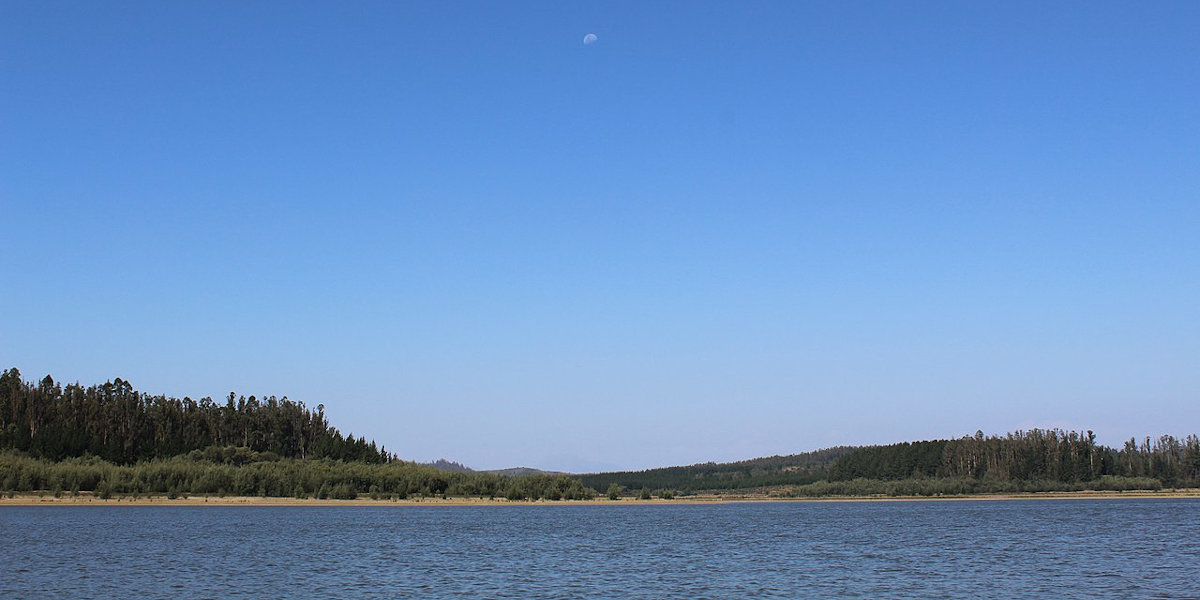A 13-year mega-drought is straining Chile’s freshwater resources to breaking point. 2022 has been the fourth-driest year on record and means more than half of Chile’s 19 million population lives in areas suffering from ‘severe water scarcity’. The situation is so critical that in the capital, Santiago, the city government has devised a rationing plan with rotating water cuts of up to 24 hours for 1.7 million inhabitants.
Today Chile is the only country in the world that says in its constitution water can be treated as private property. The commodification of water began during General Pinochet’s regime. The 1981 ‘water code’ legally categorised water as both an economic and public good, but was really geared toward accelerating privatisation.
Since then, water privatisation has intensified – even sanitation has followed suit. The impacts are huge.
Sold for profit
The country’s water supplies come mainly from rivers. Water for consumption by the country’s population is managed by private companies and sold for profit. Aguas Andinas, for example, a subsidiary of the transnational company Agbar and Suez, monopolises Santiago’s market, selling water to six million of the city’s 7.2 million residents at one of the highest tariffs in Latin America.
In addition, much of the country’s water supplies are used in industrial extraction, forestry, and the production of agriculture for export in the global market.
According to water rights NGO El Movimiento de Defensa del Agua, la Tierra y el Medioambiente (Modatima), water grabs by private actors are central to the ongoing drought. Rodrigo Mundaca, spokesperson for Modatima, says, ‘We formed Modatima to resist the dispossession of water. Initially the strategy was simple: make the problem visible and spread information. But it hasn’t been easy: members of our organisation have suffered criminalisation and censorship. From 2012-2014, I was taken to court 24 times.’
Today Mundaca is the elected governor of the water-scarce region Valparaíso, continuing his fight for water rights in the corridors of power. Yet the 2022 rejection of a proposed new constitution for Chile represented a huge blow to the cause. The new constitution would have brought water back into public ownership, declaring water rights ‘incomerciales’ (unsellable). Yet, in a crushing blow to Chilean progressives and the Boric government (which was elected after the new constitutional process had begun but is closely associated with the ‘yes’ vote), in September 2022 62 per cent voted to reject the new constitution.
Water intensive
Chile’s economy, South America’s largest by per-capita GDP, is built on water-intensive, extractivist industries: mining, forestry and agriculture. Supported by the state-sanctioned private rights system, about 59 per cent of the country’s water resources are currently dedicated to forestry, despite it making up just 3 per cent of Chile’s GDP. Another 37 per cent is designated for the agricultural sector, leaving only a tiny amount of Chile’s water for human consumption.
The rejection of a proposed new constitution for Chile represented a huge blow to the fight for water rights
Chile’s five ‘sacrifice zones’, as they have been dubbed by local and environmental groups, are areas across the country that were chosen in the 1950s for rapid industrialisation at the expense of wider public and environmental health. While Chileans are forced to rely on emergency tankers to deliver drinking water, extractivist companies siphon off water for their industrial needs.
Meanwhile, in Chile’s central basin lies the semi-arid Petorca, where avocado is grown for export and, as a result, has drained the area of drinking water. The avocado trade has grown exponentially thanks to free trade agreements signed in the late 1990s. It takes 389.5 litres to produce one kilo in Petorca and the monoculture of avocados means the Ligua river is now completely dry.
Rejecting reform
The effects of climate change are being felt across the globe and especially in the global south. In 2022, Chile has experienced below average rainfall. However, its water scarcity is equally, if not more, the result of government policy to commodify water and reroute freshwater supplies to the production of exports for the global market. Activists have coined the slogan ‘no es sequía, es saqueo’ (‘it’s not drought, it’s plunder’) to reflect this fact.
Again, the new constitution looked to rectify this trend. Yet even water-stressed areas such as Petorica voted by 56.1 per cent to reject the proposals. The reasons for the country’s rejection are complex. The ‘rechazo’ (reject) campaign was an effective misinformation machine, spreading outright lies about the proposals within the new constitution that fomented division.
An early 2022 survey, for example, found that over half of voters had been subject to misinformation. The rechazo campaign was also well funded: 89 per cent of private donations flowed to their camp, reflecting the interests of big industry.
The central conundrum facing Chile’s progressives is that policies to alleviate the water crisis have now been rejected by those living in the very areas it affects most. Felipe Irarrázaval, a researcher at the Centre for Social Conflict and Cohesion Studies (COES) suggests that ‘the issue is that the constitutional process addressed many other issues beyond the environment, and this perhaps touched another nerve and other sensibilities that begin to explain the result’.
The issue of access to safe and affordable drinking water in Chile remains urgent. How will Chileans deal with this crisis? Despite the recent setback, activists across the country remain defiant in pursuit of water with the three c’s: cantidad, cualidad and continuidad (quantity, quality and continuity).
Either way, water rights campaigners fear that the outcome of the referendum will be used to mask the country’s water scarcity issues. The future remains uncertain. The Boric administration will look to renew the constitutional process but the decision lies with the Chilean congress.










